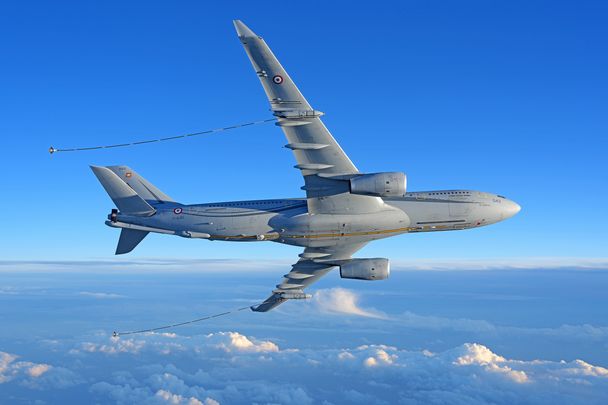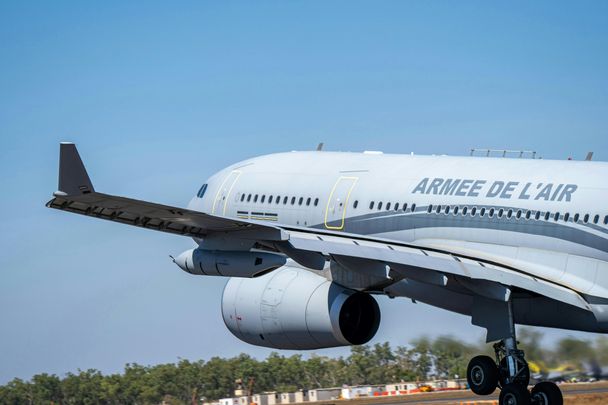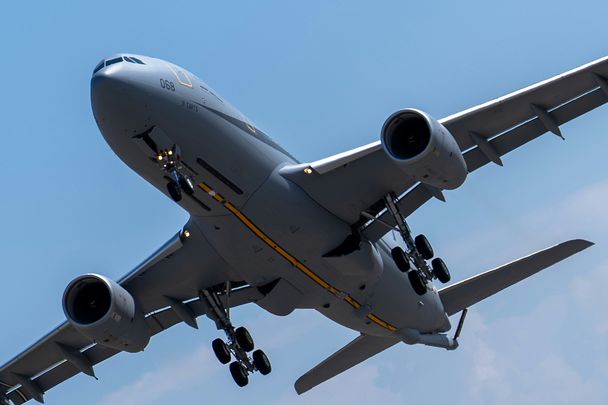Airbus A330 MRTT and the 60th anniversary of the French Strategic Air Forces

On October 8, 2024, the French Air Force commemorates the 60th anniversary of the Strategic Air Forces (Forces Aériennes Stratégiques, FAS), one of the two components of France's nuclear deterrence. The A330 MRTT “Phénix” fleet is fully integrated into the FAS command.
We took this opportunity to interview the General Stéphane VIREM, commanding the FAS, who described the A330 MRTT “Phénix” as having “revolutionised not only the operational capabilities of the Strategic Air Forces, but also those of the entire French Air Force”.
The Strategic Air Forces (FAS) are one of France's two nuclear deterrence components. Today marks its 60th anniversary. Could you give us a brief history of what led to the creation of the FAS, and what it represents today in the sovereignty of French defense?
The deterrence is the expression of a strong political choice, made at the highest level of government by the President of the Republic, to preserve our strategic autonomy and freedom of action.
As a result of the Second World War and the Suez Canal crisis, General de Gaulle decided in 1962 to create the Strategic Nuclear Forces (Forces Nucléaires Stratégiques). On February 20, the (Strategic Air Command (Commandement Aérien Stratégique, CAS) was set up at Versailles, under the command of the commanding general of the bomber air force.
This was followed by a series of decrees published in January 1964, giving the President of the Republic the power to commit nuclear forces in his capacity as Head of State, Chairman of the Defense Council and Commander-in-Chief of the Armed Forces, and establishing the Strategic Air Forces Command (FAS) at the Taverny airbase near Paris, with responsibility for the deployment of nuclear bombers, followed by Strategic Ground-to-Ground Ballistic Missiles in 1971.
On May 1, 1964, General Philippe Maurin became the first commander of the FAS. Reporting to the President of the Republic, he received orders from the President to maintain posture, assign targets and, if necessary, order forces to engage.
Last but not least, October 8, 1964 is a symbolic date for both our Air Force and our country. On that day, at Mont-de-Marsan airbase, a Mirage IV bomber armed with an AN-11 nuclear bomb and accompanied by a C-135F tanker aircraft, carried out the first nuclear alert in our history.

This day of the 60th anniversary is the beginning for our strategic nuclear forces. It is the culmination of an unprecedented national scientific, technological, industrial, financial and operational effort, driven by strong political ambition. October 8, 1964 was also a beginning, since from that day onwards, France has had its own, totally sovereign capacity to defend its vital interests.
At that time, there were three types of alerts: AB, “alerte à bord” (on-board alert), meaning that the crew was in the aircraft, waiting for it to start up and take off immediately; A5, “alerte à cinq minutes” (five-minute alert), meaning that the aircraft would take off five minutes at the latest after the alert signal; A15, “alerte à quinze minutes” (fifteen-minute alert), meaning that the aircraft would take off fifteen minutes at the latest after the alert signal.
Nuclear deterrence is still the cornerstone of French defense strategy. The aim is to ensure that any state contemplating attacking France's vital interests will suffer “absolutely unacceptable damage”. As a guarantee of our freedom of assessment, decision and action, nuclear weapons can only be used in extreme circumstances of self-defense.
The Strategic Air Forces are the heart of the airborne nuclear component. Equipped with the Rafale, the upgraded ASMP/A missile and the A330 MRTT, its personnel and resources have been contributing uninterruptedly to the deterrence mission and guaranteeing its technical and operational credibility since October 8, 1964. They contribute to the operational credibility of deterrence in all circumstances, thanks to the range of their airborne resources, their ability to penetrate enemy defenses, and the precision of their weapons.
Thanks to the triptych of Rafale aircraft, upgraded ASMP-A missile and tanker aircraft, the FAS provides the President of the Republic with responsive and reversible modes of action. They are a major asset in the dissuasive dialogue and enable a visible increase in power, demonstrating the determination of the President of the Republic, as head of the armed forces, in the event of a threat to our vital interests.
A330 MRTT 60 Year Anniversary French Air Force
Could you remind us why the Airbus MRTT Phénix is an integral part of the Strategic Air Forces? What has its entry into service in the FAS changed, particularly in terms of operational capabilities?
The MRTT is an integral part of the airborne nuclear deterrence triptych - Rafale aircraft, upgraded ASMP-A missile, tanker aircraft - providing the necessary range for air raids.
The arrival of the Airbus A330 “Phénix” has revolutionised the operational capabilities not only of the Strategic Air Forces, but also of the entire French Air Force.
Since I joined the FAS in August 2023, the MRTTs have been used extensively for so-called conventional operations: the disengagement from Niger and even more so with New Caledonia this year. We deployed an air bridge over 14,000 km, with a total of 32 movements of strategic transport aircraft over a short period. We carried 4,100 passengers and 435 tonnes of equipment, a capacity that is absolutely unique in France.
The MRTT provides armed forces with multiplied projection capabilities over very long distances: in-flight refuelling, strategic transport and aeromedical transport. The third PEGASE power projection mission, which was carried out in July-August 2024, is another example that France is a sovereign nation capable of protecting its territories and interests around the globe. This fleet will be complete once the three A330-200s have been converted to the MRTT standard, bringing the total number of strategic aircraft to 15, the number needed to carry out all the missions entrusted to the French Air and Space Force, including those of the Strategic Air Forces, following the withdrawal of the three KC-135 aircraft.

If we look to the future for a moment on this anniversary: how will the MRTT Standard 2, due to enter service from 2028, further enhance the operational capabilities of the FAS? And if we look even further ahead, to 2040 and beyond, how do you see the arrival of the Future Combat Air System (FCAS) to take over air deterrence missions?
The Phénix revolutionised strategic transport and refuelling. With the MRTT standard 2, we are working on its future in two more specific areas: an electronic warfare component designed to improve the MRTT's survivability - and therefore its nuclear raid capability - and a connectivity component. These developments will enhance our ability to conduct complex air operations. The aim is to maintain our credibility in an increasingly contested environment.
We are also preparing for the ultra-connected Future Combat Air system (FCAS). The Phénix must be able to take this into account. The arrival of the FCAS in 2040 is very promising. It is based on a collaborative combat strategy, enabling it to operate in the most challenging environments. It is highly responsive to FAS missions. What's more, it will support the new ASN4G missile.
The ASN4G will be a highlymanoeuvrable, hyper-velocity missile, i.e. hypersonic - with a speed in excess of Mach 5. It will be highly capable of delivering nuclear fire at a distance unmatched today, and of penetrating the densest, most developed adversary defenses in service between 2035 and 2065.



